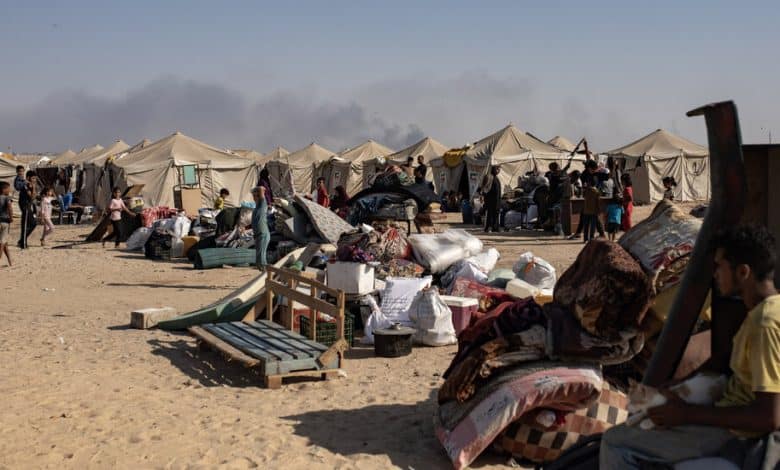Palestinians Report Heavy Bombardments in the Rafah Area

Residents and Palestinian media reported a night of heavy bombardment in the area of Rafah, in southern Gaza, on Thursday as the Israeli military said its forces had continued to operate “in face-to-face encounters” with Hamas militants there.
Saeed Lulu, a 37-year-old who is sheltering in the nearby area of Al-Mawasi — parts of which Israel has designated a “humanitarian zone” for people who have fled Rafah — said he heard strikes between midnight and 6 a.m., though he said he was not aware of any casualties. The strikes appeared to target the southwest edge of Al-Mawasi, he said.
“We are very concerned,” Mr. Lulu said. “This is supposed to be a safe area, and we have no other place to go to if they attack here,” he added.
It was not possible to independently verify the location of the strikes.
Wafa, the Palestinian Authority’s official news agency, reported on Thursday that the Israeli military had intensified missile and artillery bombardment “by air, land and sea,” on Al-Mawasi.
The Israeli military quickly denied the Wafa reports and said in a statement posted on the Telegram messaging app that no Israeli military attack “took place in the humanitarian area of Al-Mawasi.”
In a later statement, the military said its forces were pressing on with operations in Rafah, where they were engaged in “face-to-face encounters” with Hamas fighters.
Fighting in Rafah has raged on and off since early May, when Israeli soldiers began their advance into the heart of Rafah in what Israel has called an essential step to defeating remaining Hamas battalions and dismantling the group’s infrastructure.
The population in Al-Mawasi has grown immensely as hundreds of thousands of people have heeded Israel’s warnings to leave Rafah. Israel has insisted that it has not attacked the areas it has designated as humanitarian zones, but many Gazans are not clear on their exact locations and remain on edge.
Israel has posted on social media and dropped leaflets over Gaza to identify the zones. But aid workers have noted how difficult it is for people in Gaza to determine whether they are in a designated safe area, as many have limited access to mobile phones or the internet.
Some civilians have said they never saw any leaflets, while others said the directions, which include a numbering system the Israeli military uses to describe different areas, confused them.
